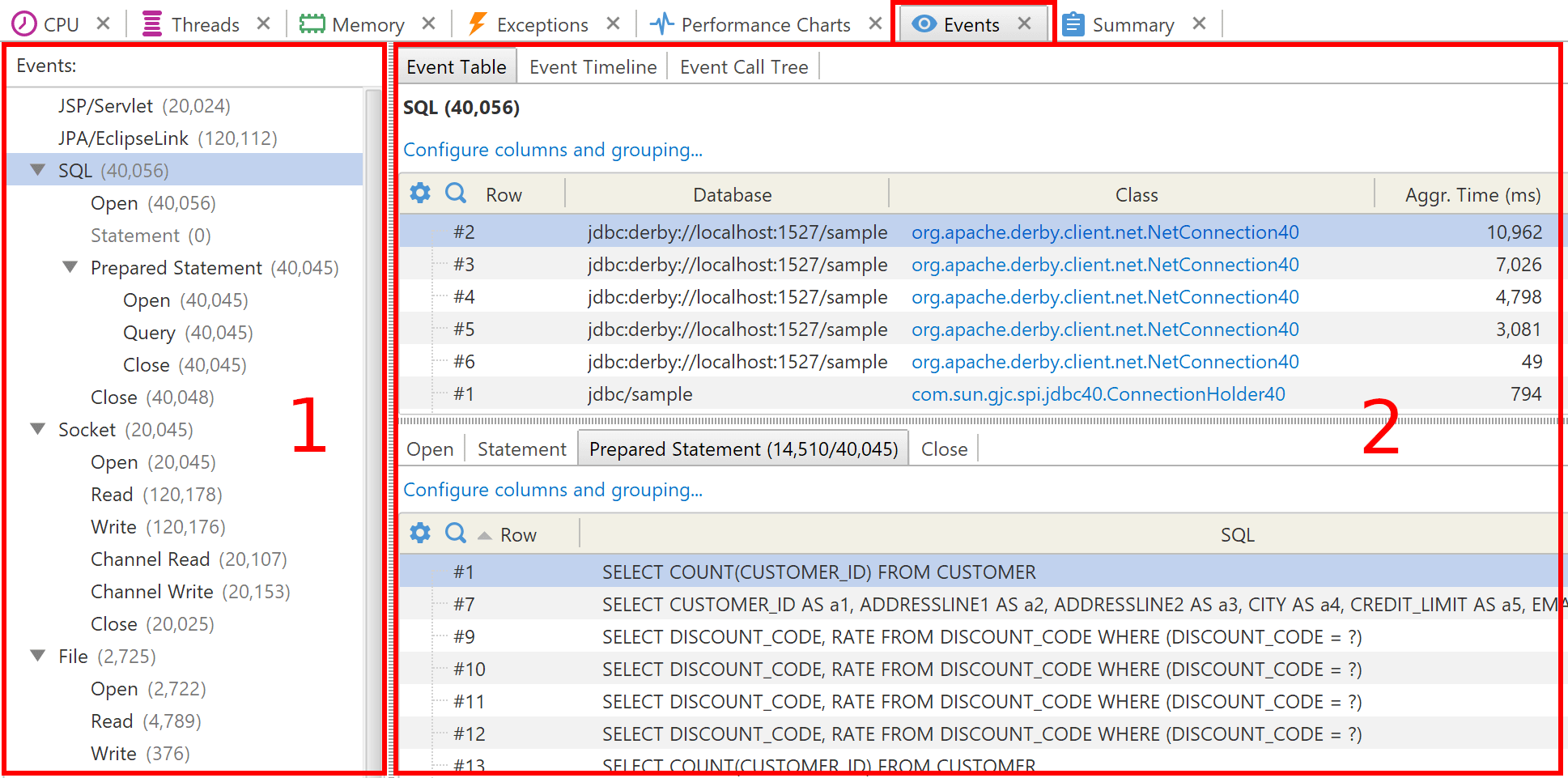- System requirements
- Profiler architecture
- Profiler installation
- Uninstall profiler
- Running the profiler
- Profiler activation
- Welcome screen
- Start profiling
- Profiling overhead
- Snapshots
- Solving performance problems
- CPU profiling
- Thread profiling
- Virtual threads support
- Object allocation profiling
- Memory profiling
- Monitor profiling
- Exception profiling
- Telemetry
- Probes: monitor events of various kinds
- Events in user interface
- Event inspections
- Built-in probes
- Probe classes
- Monitoring method invocation events
- Probe class annotation @MethodPattern
- Callback onEnter()
- Callback onReturn()
- Callback onExit()
- Callbacks onUncaughtException() and onUncaughtExceptionExt()
- Parameter annotation @Param
- Parameter annotation @Params
- Parameter annotation @This
- Parameter annotation @ClassRef
- Parameter annotation @MethodName
- Parameter annotation @MethodTimeMs
- Parameter annotation @MethodTimeNs
- Parameter annotation @MethodParameterTypes
- Parameter annotation @MethodSignature
- Parameter annotation @OnEnterResult
- Parameter annotation @ReturnValue
- Parameter annotation @ThrownException
- Probe application rules
- Data storage
- Inspections: automatic recognition of typical problems
- Automatically trigger actions on event
- Automatic deobfuscation
- Summary
- Filters
- Profiler command line
- Export of profiling results to external formats
- Profiler Java API
- Profiler HTTP API
- Settings
- Troubleshooting and FAQ
Events in user interface
The probes and their results are shown in tab "Events".
The tab is available when the profiler is connected to profiled application, as well as browsing saved snapshot.
Some functionality is available for a saved snapshot only.
The view consists of two parts:

1. Table selector
Shows all available tables as a tree: dependent tables are show as nested nodes of their primary tables.
Selected table is shown in Event table (see below).
Also, the table selector controls events from which tables are shown in Event timeline and Event call tree views (see below) via checkboxes.
2. The views
- Event table shows events in the table, which is selected in the table selector (1).
- Event timeline shows event sequence in a table form. Use the table selector (1) to specify which events to include.
- Event call tree shows events distributed by stack trace. Use the table selector (1) to specify which events to include.
Navigation between the views
To open selected event(s) in another view, use corresponding popup menu items. Read more...
